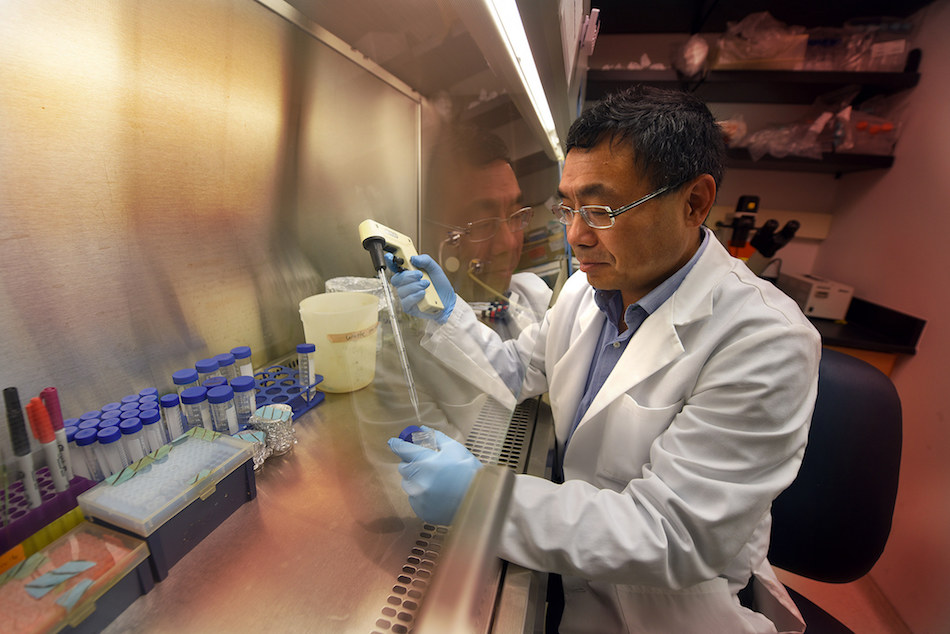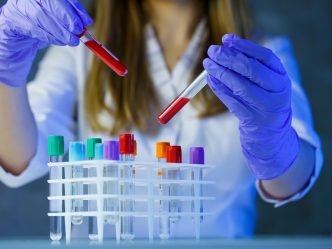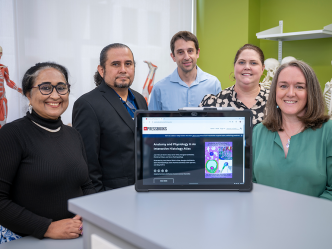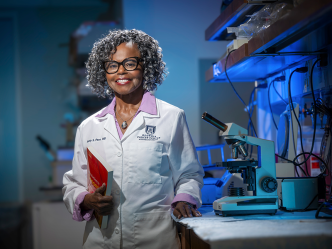Receptors on the surface of our cells enable a wide variety of functions from our sense of smell to memory.
Now scientists are learning more about the constant export of these receptors from inside the cell where they are made, to the cell surface where they function. When they don’t travel well, diseases and deficits can result.
“We want to better understand how receptors make this essential journey because we need to understand it and because we hope that one day we can rescue receptors that don’t,” said Dr. Guangyu Wu, pharmacologist in the Department of Pharmacology and Toxicology at the Medical College of Georgia at Augusta University.
His focus is the largest of three classes of cell surface receptors called G protein-coupled receptors, or GPCRs, which are involved in a wide range of functions from taste and smell to regulating our immune system and mood. Their wide-ranging functions also make GPCRs a big target for manufactured drugs.
Manmade drugs mimic the endogenous ligands that bind to these receptors to either activate or block their action. As examples, the adrenergic receptors Wu is using as his GPCR model are blocked by a wide range of pharmaceuticals from antihistamines for allergies to beta blockers for the heart. In fact, about one-third of all drugs on the market target GPCRs, and there’s about 800 versions of this receptor type expressed on cells throughout the body, Wu said.
But to be the target of a natural or manmade ligand, these receptors first must reach the cell surface, and Wu is further narrowing which members of a big family of small proteins help get them there.
“To understand how receptors are transported here, we need to find the proteins that are regulating this transport,” said Wu, principal investigator on a new $1.3 million grant from the National Institute of General Medical Sciences.
The big family is Rab proteins, known master regulators of intracellular trafficking, that are adept at helping form intracellular compartments called vesicles that can haul things like receptors and at traveling the cytoskeleton, or cell framework, to get cargo where needed. To date, about 70 different Rab proteins have been found in humans, and Wu’s many goals with his new grant include further scrutinizing the Rabs hauling GPCRs and just how they accomplish their endless and essential task.
Three years ago, Wu screened this protein family and found what appears to be a major driver of GPCRs, Rab43. He’s already documented Rab43 shuttling receptors from where they are produced to where they are fine-tuned then circling back for another trip. Rab26 appears to take it from there, moving the further-evolved receptor to the cell membrane where it can be activated then circling back for another cargo as well.
Rab43 picks up its cargo in the endoplasmic reticulum, which functions like a manufacturing plant inside cells where receptors are assembled and correctly folded so that they have the correct function. These newly-minted receptors are packaged in vesicles then Rab43 drives the receptor-laden vesicle to the Golgi apparatus, which functions like a finishing plant, where receptors are matured and final tweaks are made, such as adding sugars that are needed for receptors to anchor on the cell membrane once Rab26 gets them there.
Each step is important as misfolded proteins can lead to a wide range of diseases, and receptors that never reach the cells surface can do the same. While Wu suspects the vesicles could still move without Rab43, it’s a slow, inefficient system, with fewer receptors transported and subsequently expressed on the cell surface. Slow removal can result in a traffic jam inside the endoplasmic reticulum, causing stress, receptor degradation, possibly triggering cell death and contributing to diseases like Alzheimer’s and Parkinson’s rather than enabling healthy brain cell function, for example. The cell may even start shuttling receptors that stay too long in the endoplasmic reticulum directly to the recycling bin just because they are already too old to use.
Now Wu is working to better characterize how Rab43 and 26 move receptors, asking significant remaining questions like whether the two Rab proteins work together. He knows that each temporarily binds with the receptors it’s hauling but wants to know more about when the important bond forms, and if it’s receptors attracting Rab or vice versa. And how does the relationship end? He has watched vesicles arriving at the Golgi, for example, fuse with it and release their contents while the Rab proteins keep on working. Once delivered, receptors show no obvious evidence of the prior bond with either Rab protein, he noted.
“We are trying to figure out exactly what they are doing,” Wu said, while answering questions like whether the bond is necessary for receptor recruitment to the vesicles. One way he’s further exploring the relationships is by blocking the Rab proteins and seeing what happens. He’s also exploring early evidence that another Rab may come along as a sort of substitute driver if R43 isn’t doing its job.
Wu’s model of GPCRs, andrenergic receptors, are highly expressed in neurons, and regulate the sympathetic nervous system that regulates the body’s fight or flight response, causing short-term responses such as increased blood pressure and heart rate as well as inhibition of basics like digestion and peripheral vision so we can focus on fighting or fleeing. The fact that GPCRs tend to have similar structure makes andrenergic receptors a good prototype for study of the large cell surface receptor family, Wu said. His early evidence indicates that many GPCRs use a common trafficking pathway to get receptors to the cell surface.
 Augusta University
Augusta University




